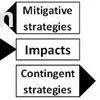 “Publish or perish“. You’ve heard the phrase, right? Well, apparently, getting published in the first place is not as easy as it seems, and the peer-review process may not as objective and unbiased as you may think. If you’re in (that is belonging to the right academic circles, and thus worthy of being published), you’re in, almost no matter what you write, but if you’re not in, finding someone willing to take you in is practically impossible, or is it?
“Publish or perish“. You’ve heard the phrase, right? Well, apparently, getting published in the first place is not as easy as it seems, and the peer-review process may not as objective and unbiased as you may think. If you’re in (that is belonging to the right academic circles, and thus worthy of being published), you’re in, almost no matter what you write, but if you’re not in, finding someone willing to take you in is practically impossible, or is it?
It helps to be “next of kin”
Not long ago I came across an interesting blog post on interorganisational.org, titled Questions of science, science and progress, referring to Ring a Ring o Roses, an article published in Journal of Management Studies that examined the gamesmanship of publishing in quality journals. And fair enough, it does appear that the some “established” authors seem to get published a lot more than other younger authors. That article made me think about my own efforts at getting published.
Periodical usefulness
Actually, this is not the first time that I have stumbled across this topic on interorganisational.org. In their post Ranking Academic Journals, they directed the reader towards Periodical Usefulness, a paper reporting the findings of an international survey of logistics academics on their views of journals used for research, teaching and outreach. But for now, let’s look at the ‘Ring a Ring o Roses’ article.
The Catch 22
Albeit I am working in a different field, I do believe that some of their observations are found even in most fields of study, even in my own, Logistics and Supply Chain Management, as reported in the Periodical Usefulness article. As to Management Studies, the authors state that
A paper in one of the quality journals of Management Studies is much more important as a unit of measurement than as a contribution to knowledge. It measures academic performance and determines much academic funding. There is consequently some pressure to publish in quality journals. But quality journals are defined in terms that are themselves defined in terms of quality journals – a circularity that explains both the paper’s title and the frustration of those who do not mix in these circles.
Here’s the Catch 22: In order to be published in a quality journal, you need to belong to the right circle, but in order to be admitted to the circle you need have been published in a journal related to the circle in the first place. An impossible circular logic…
What makes a quality journal?
Are the number of publications an academic (or institution) has in quality journals a true measure of research output? Or is it that the interest in the measure exceeds the interest in the research itself? And what makes a quality journal anyway? Are these true indicators of quality:
- the number of publications from top business schools?
- the number of citations in other journals/publications?
- the rejection rate amongst submissions?
On occasion, I act as a reviewer for journal submissions. Am I contributing to upholding quality?
Publishing: Fame and fortune, just fame, or just fortune?
Many academic departments are rewarded with funding according to the number of publications depending on where they are published. This may lead to gaming, because
the indicator supplants the indicated
and now everybody plays the game,
- universities
- by encouraging their their staff to publish
- authors
- by churning out paper after paper
- editors
- by asking for more papers for ‘special editions’
In addition, in order to get published, it is indeed advisable to write something a particular journal might favor:
Select your journals
Determine consensus in area of research
Do research
Extract from research the bits that fit each journal
Write paper and submit to journal
Is that how it’s done? Simply by playing the game, by submitting to the same “quality” journals that were quality journals decades ago, because that is where “quality” sits?
There is a profusion these days of printed, and more recently, online journals…an “academic bubble” perhaps? But all new journals cannot be quality journals, can they? Are they just the result of frustrated academics who could not find other research outlets? Or are they the the result of editors eager to further promote already existing and well-known (‘quality’) authors?
Should I laugh or cry at this kind of game? Maybe I shouldn’t take this whole publishing thing so serious. After all, as the authors put it
Publication in quality journals should not be held in such awe.
Why? Because
more than half of all academic papers are never cited anywhere, and the majority of academics never receive as many as three citations in a lifetime.
I find that last statement hard to believe. Are there actually articles around that are never cited by anyone? But then again, failure to be cited has probably more to do with utility than quality, and consequently, when writing academic articles one should think usefulness, not quantity nor funding.
Maybe it is what you do that should matter, not what you publish? This article in The Economist, referenced in this blog, had an interesting twist on the matter: Publish and be wrong.
References
- Gibson, B., Hanna, J., & Menachof, D. (2004). Periodical usefulness: an international perspective International Journal of Logistics, 7 (3), 297-311 DOI: 10.1080/13675560412331298482
A working paper version can be downloaded at SSRN - Macdonald, S., & Kam, J. (2007). Ring a Ring o? Roses: Quality Journals and Gamesmanship in Management Studies Journal of Management Studies, 44 (4), 640-655 DOI: 10.1111/j.1467-6486.2007.00704.x
Related
- husdal.com: Online Journals: curse or blessing
- husdal.com: The art of reviewing journal submissions












